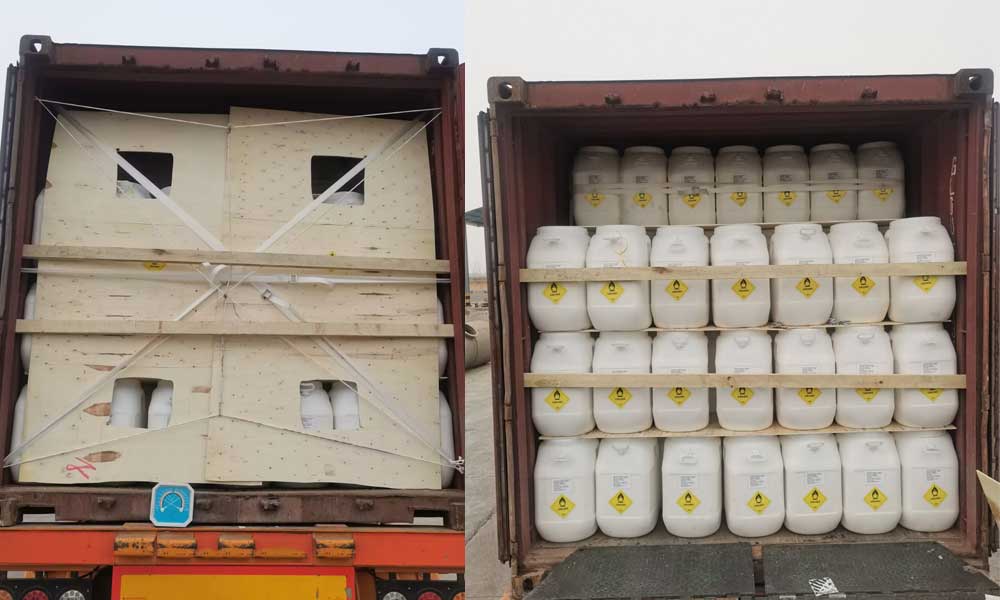Dichloroizocyjanuran sodu(SDIC), silny środek chemiczny powszechnie stosowany w procesach uzdatniania i dezynfekcji wody, wymaga szczególnej uwagi podczas przechowywania i transportu, aby zapewnić bezpieczeństwo zarówno pracownikom, jak i środowisku. SDIC odgrywa kluczową rolę w utrzymaniu czystości i bezpieczeństwa systemów wodnych, ale niewłaściwe obchodzenie się z nim może prowadzić do niebezpiecznych sytuacji. Niniejszy artykuł omawia podstawowe wytyczne dotyczące bezpiecznego przechowywania i transportu SDIC.
Znaczenie prawidłowego obchodzenia się
SDIC jest powszechnie stosowany w basenach, stacjach uzdatniania wody pitnej i innych systemach wodnych ze względu na swoje wyjątkowe właściwości dezynfekujące. Skutecznie eliminuje bakterie, wirusy i inne szkodliwe mikroorganizmy, przyczyniając się do zdrowia i bezpieczeństwa publicznego. Jednak potencjalne zagrożenia, jakie niesie, wymagają starannego przechowywania i transportu.
Wytyczne dotyczące przechowywania
Bezpieczne miejsce: Przechowuj SDIC w dobrze wentylowanym, suchym i chłodnym miejscu, z dala od bezpośredniego światła słonecznego i substancji niekompatybilnych. Upewnij się, że miejsce przechowywania jest zabezpieczone przed nieautoryzowanym dostępem.
Kontrola temperatury: Utrzymuj stabilną temperaturę przechowywania w zakresie od 5°C do 35°C (od 41°F do 95°F). Wahania poza tym zakresem mogą prowadzić do degradacji chemicznej i osłabiać skuteczność produktu.
Prawidłowe opakowanie: Przechowuj SDIC w oryginalnym, szczelnie zamkniętym opakowaniu, aby zapobiec przedostawaniu się wilgoci. Wilgoć może wywołać reakcję chemiczną, która osłabia jego działanie i generuje szkodliwe produkty uboczne.
Etykietowanie: Wyraźnie oznacz pojemniki magazynowe, podając nazwę chemiczną, ostrzeżenia o zagrożeniach i instrukcje dotyczące postępowania. Dzięki temu pracownicy będą świadomi zawartości i potencjalnych zagrożeń.
Wytyczne dotyczące transportu
Integralność opakowania: Transportując SDIC, należy używać solidnych, szczelnych pojemników przeznaczonych do transportu niebezpiecznych substancji chemicznych. Dokładnie sprawdź pokrywy i uszczelki pojemników, aby zapobiec wyciekom lub rozlaniu.
Segregacja: Podczas transportu należy oddzielić SDIC od substancji niekompatybilnych, takich jak silne kwasy i reduktory. Niekompatybilne materiały mogą prowadzić do reakcji chemicznych, które uwalniają toksyczne gazy lub mogą spowodować pożar.
Sprzęt awaryjny: Podczas transportu SDIC należy mieć przy sobie odpowiedni sprzęt ratunkowy, taki jak zestawy do usuwania wycieków, środki ochrony osobistej i gaśnice. Gotowość jest kluczowa w radzeniu sobie z nieoczekiwanymi sytuacjami.
Zgodność z przepisami: Zapoznaj się z lokalnymi, krajowymi i międzynarodowymi przepisami dotyczącymi transportu niebezpiecznych substancji chemicznych. Przestrzegaj etykietowania, dokumentacji i wymogów bezpieczeństwa.
Gotowość na wypadek sytuacji awaryjnych
Pomimo środków ostrożności wypadki mogą się zdarzyć. Kluczowe jest posiadanie planu reagowania awaryjnego zarówno w obiektach magazynowych, jak i podczas transportu:
Szkolenie: Przeszkol personel w zakresie prawidłowego obchodzenia się z towarem, jego przechowywania i procedur reagowania w sytuacjach awaryjnych. Dzięki temu wszyscy będą przygotowani na nieoczekiwane sytuacje.
Ograniczanie wycieku: Przygotuj środki zapobiegające wyciekowi, takie jak materiały chłonne i bariery, aby zminimalizować rozprzestrzenianie się wycieku SDIC i zapobiec skażeniu środowiska.
Plan ewakuacji: Wyznacz wyraźne drogi ewakuacyjne i miejsca zbiórki na wypadek sytuacji awaryjnych. Regularnie przeprowadzaj ćwiczenia, aby upewnić się, że wszyscy wiedzą, co robić.
Podsumowując, prawidłowe przechowywanie i transport dichloroizocyjanuranu sodu (SDIC) mają kluczowe znaczenie dla zapewnienia bezpieczeństwa zarówno pracowników, jak i środowiska. Przestrzeganie ścisłych wytycznych i przepisów, dbanie o integralność opakowań oraz posiadanie planów reagowania awaryjnego to niezbędne kroki w celu zapobiegania wypadkom i ograniczania potencjalnego ryzyka. Przestrzegając tych środków, możemy nadal wykorzystywać dezynfekujące właściwości SDIC, stawiając bezpieczeństwo ponad wszystko.
Aby uzyskać więcej informacji na temat bezpiecznego obchodzenia się z SDIC, zapoznaj się z Kartą Charakterystyki Substancji Niebezpiecznej (MSDS) dostarczoną przez Producent SDICi skonsultuj się ze specjalistami ds. bezpieczeństwa chemicznego.
Czas publikacji: 24-08-2023


